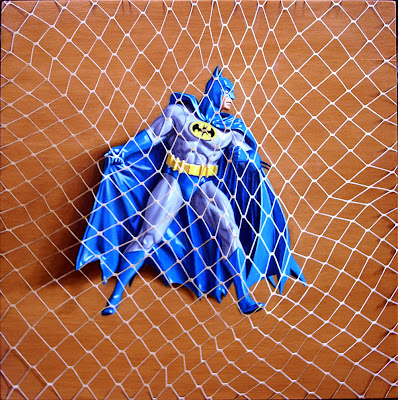AMY LIN
DIFFUSION
March 2 -April 27, 2013
opening reception for the artist,
Saturday, March 2, 5-7pm
Since 2003... the 11th highest ranked art blog on the planet! And with over SEVEN million visitors, F. Lennox Campello's art news, information, gallery openings, commentary, criticism, happenings, opportunities, and everything associated with the global visual arts scene with a special focus on the Greater Washington, DC area.
 |
| Bruce Wayne: Trapped Batman 30x30 cm. Oil and Alkyds on Wood. 2013 by Simon Monk |
Bareket Observatory in Israel is offering a free live webcast of the close approach on February 15 beginning at 20:15 UTC (2:15 p.m. Central Time in the U.S.), for a duration of about 3 hours. For more information, visit Baraket Observatory’s website. You’ll be automatically transfered to the live images, during the event.
Clay Center Observatory will offer real-time high-definition video, weather permitting, beginning at 1:00 UTC on February 16 (5 p.m. CST on February 15). Clay Center Observatory’s Ustream channel is here.
NASA Television will provide commentary starting at 19:00 UTC (1 p.m. CST) on February 15. The commentary will be streamed live online at http://www.nasa.gov/ntv and http://www.ustream.tv/nasajpl2.
Slooh Space Camera will cover the asteroid’s near-approach on Friday, February 15, with several live shows, free to the public, starting at 02:00 UTC on February 16 (8 p.m. CST). Find international times for Slooh at http://goo.gl/ythGd. Slooh will also have real-time commentary from their own Paul Cox, astronomer and author Bob Berman, and Prescott Observatory manager Matt Francis. Visit Slooh’s event page here.
Virtual Telescope Project, which calls itself “the most active facility in the world in astronomical science and education,” will also be following 2012 DA14 on February 15. Check out Virtual Telescope’s event page here.
When you see computer-generated images of asteroid 2012 DA14′s February 15, 2013 close flyby – showing the asteroid near Earth in space, seen from a distant vantage point – you might see the Earth, the asteroid, perhaps the sun, and maybe a few other planets.Read the whole story on EarthSky here... and if you wanna laugh at a TV talking head, CNN’s Deborah Feyerick wanted to know if it was all because of global warming... see that here...
Here is another way to picture Earth and close-passing asteroids, from Armagh Observatory in Northern Ireland. The image below is near-Earth space today – February 13, 2013. It shows all the objects currently within 0.3 AU of Earth – that’s 45 million kilometers – or about 30 million miles – or about one-third of the distance between us and the sun. The red oval around Earth represents 3.84 million kilometers, or 10 lunar distances.